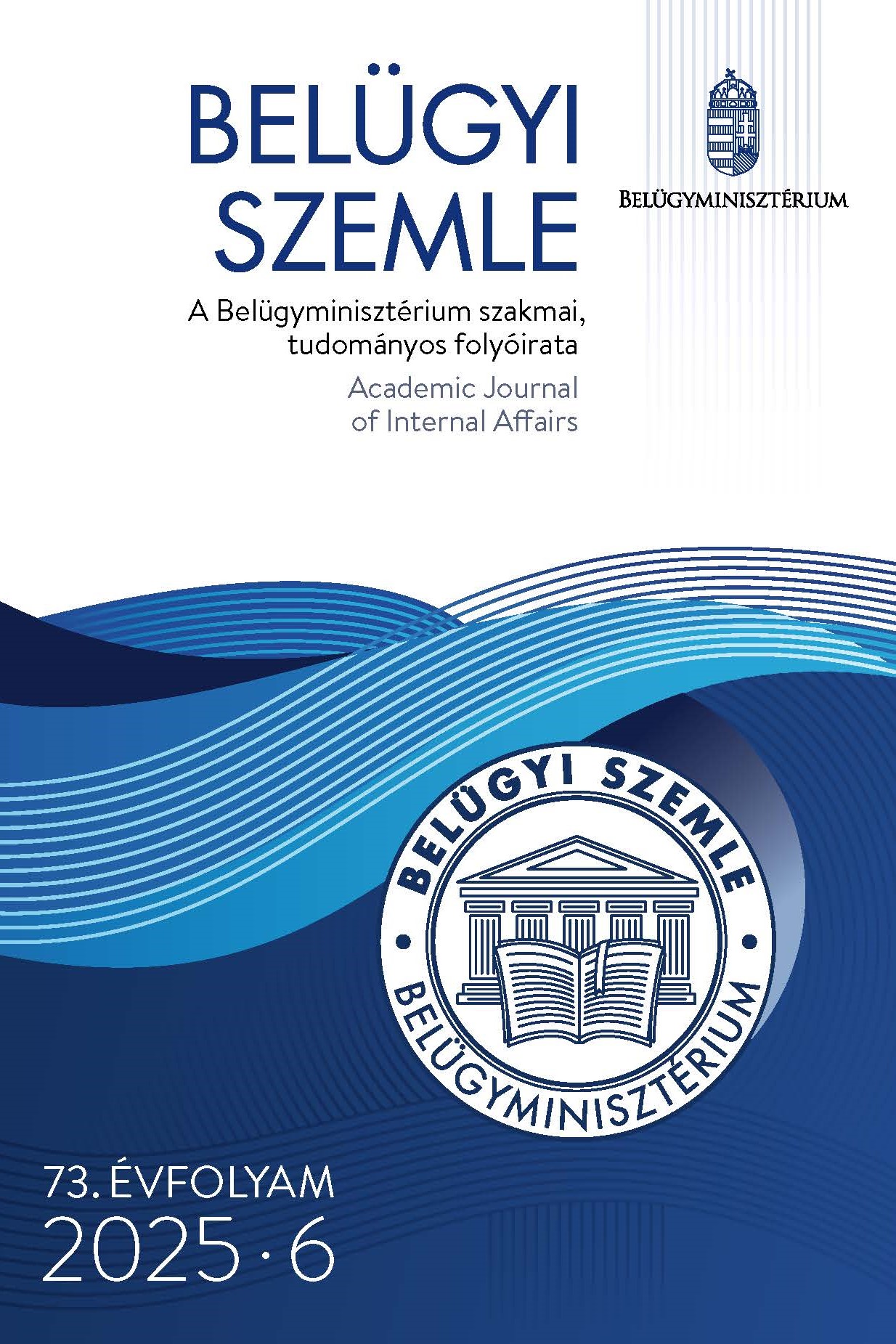Abstract
Aim: The aim of the study is to highlight that even in a highly recognised public service profession can be developed harmful and self-propagating criminal processes that cannot be treated as isolated phenomena and cannot be contained by extending internal crime prevention or detection mechanisms. It may encourage those responsible to step up quality assurance and rethink their system of rules. The article does not seek to dramatise or stigmatise, but to draw readers' attention to certain social anomalies that can affect the public service.
Methodology: In connection with the criminal offence under discussion, the article sketchily compares the media portrayal of some law enforcement professions and the ambulance service. It also describes the criminal law regulations applicable to ambulance workers, the proportion of the crimes involving this group in the Hungarian criminal statistics, the victim vulnerability of the profession and its representation in the media. The study also describes some special features of the investigation and the preparation for the prosecution.
Findings: In the social division of labour, there are some exalted occupations whose prestige is almost unassailable. Being a rescue worker is such a profession. This case describes the degeneration of common attitudes like prejudice and group hatred into an assault during an ambulance transport; in a situation which provides adequate concealment of such deeds. The random nature of the disclosure of the crime and the coordination between the perpetrators are generalisable. The author's conclusion is that the stain did not fall on the honour of the professional group concerned; the causes are being rooted in the deeper structures of the society.
Value: The criminal offence under discussion and the occupation of the offenders are rare in criminal statistics, but the multiple counts of offenses which occurred in this very case is unique. The hate crime that has been detected is blatant in the highly regarded profession of health care, but is also part of the national crime pattern and therefore its presentation offers an opportunity for study and education.
References
Bárd P. (2019). A gyűlölet-bűncselekmények elleni fellépés. In Borbíró A., Gönczöl K., Kerezsi K. & Lévai M. (Szerk.), Kriminológia (pp. 872–886). Wolters Kluwer Hungary.
Bezerédi I. (2016). Esetelemzés. Belügyi Szemle, 64(11), 108–116. https://doi.org/10.38146/BSZ.2016.11.7
Korinek L. (2019). Paradoxonok a kriminológiában. ORAC Kiadó.
Minkó-Miskovics, M. & Ács, G. (2023). Az egészségügyben közfeladatot ellátó személyek büntetőjogi védelme. Orvosi Hetilap, 164(6), 227–233. https://doi.org/10.1556/650.2023.32700
Nagy L. T. (2011). A közfeladatot ellátó személy ellen erőszak vizsgálata. In Virág Gy. (Szerk.), Kriminológiai Tanulmányok 48. (pp. 144–167). Országos Kriminológiai Intézet.
Ráczkevy-Deák, Gy. & Besenyő, J. (2022). Egészségügyi dolgozók ellen elkövetett erőszakos cselekedetek: Hazai tapasztalatok. Orvosi Hetilap, 163(28), 1112–1122. https://doi.org/10.1556/650.2022.32466

This work is licensed under a Creative Commons Attribution-NonCommercial-NoDerivatives 4.0 International License.
Copyright (c) 2025 Academic Journal of Internal Affairs

